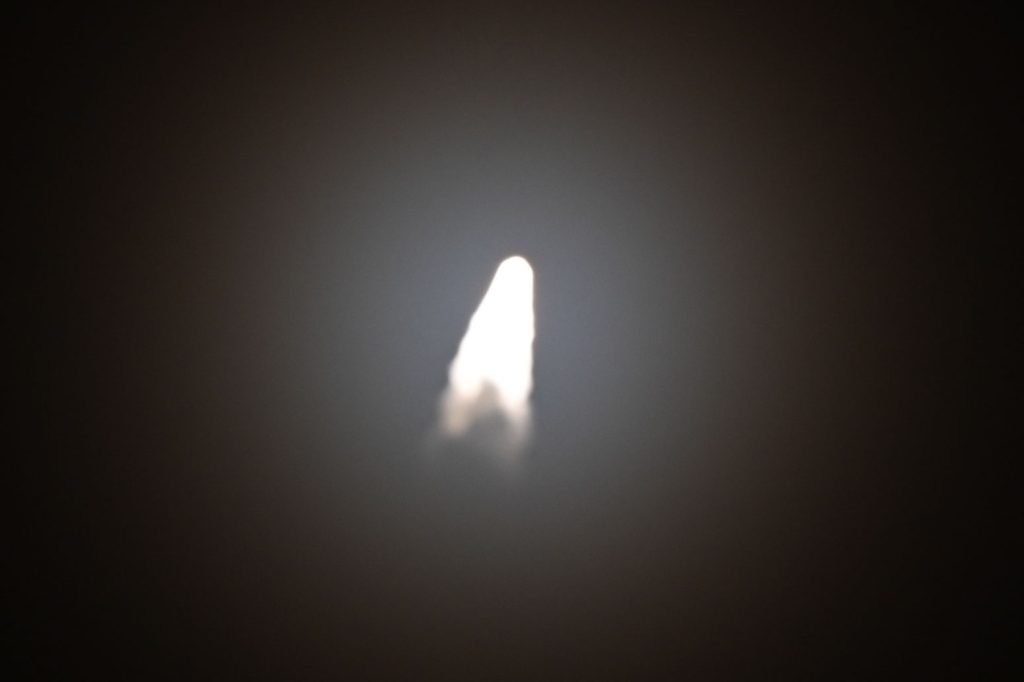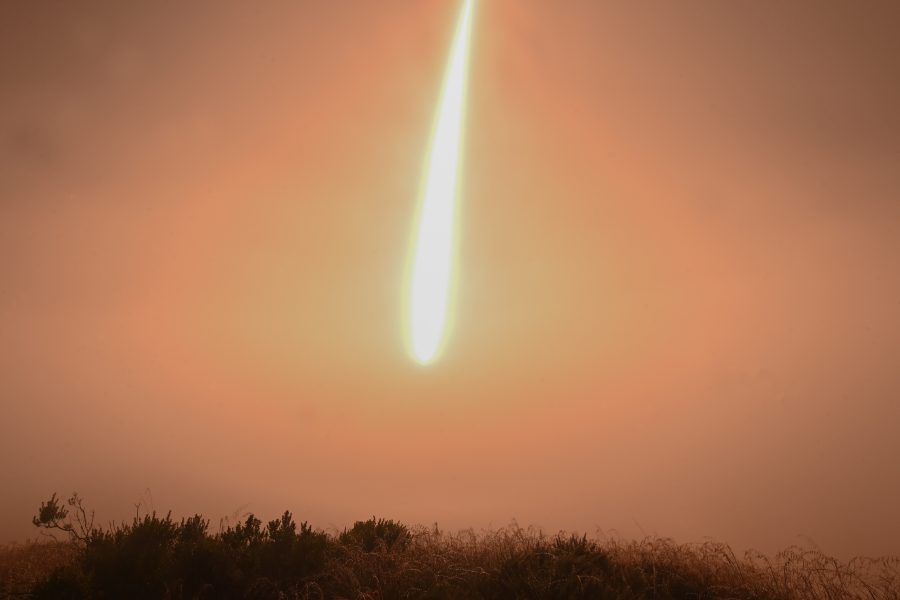Airmen and Guardians test launched another Minuteman III intercontinental ballistic missile on June 6, marking the second ICBM test from Vandenberg Space Force base in three days after a June 4 launch.
The unarmed ICBM, equipped with one re-entry vehicle, was launched at 1:46 a.m. Pacific Time, traveling approximately 4,200 miles at speeds exceeding 15,000 miles per hour. The reentry vehicle arrived at the Ronald Reagan Ballistic Missile Defense Test Site on the U.S. Army Garrison-Kwajalein Atoll in the Marshall Islands. The missile’s performance was evaluated at the Reagan Test Site (RTS) using data collected during the final phase of the trajectory.
“The fact that we were able to complete two operational test launches in one week is a testimony to the excellence and professionalism of the Airmen and Guardians who do this mission every day,” Col. Chris Cruise, 377th Test and Evaluation Group commander, said in a release. “This morning’s launch demonstrates our commitment to deterrence as we serve as the cornerstone of security for our allies and partners across the globe.”
The joint effort between Air Force Global Strike Command and the Space Force on Thursday employed a randomly selected ICBM from Maelstrom Air Force Base, Mont., that was reassembled upon arrival at the launch site. There are about 400 Minuteman III missiles currently in service across Colorado, Montana, Nebraska, North Dakota, and Wyoming.
Maintenance support for the launch was provided by the 341st Missile Wing at Malmstrom, with personnel from all three missile wings selected to form a task force. In addition to the 341st, Airmen represented the 90th Missile Wing at F.E. Warren Air Force Base, Wyo.; and the 91st Missile Wing at Minot Air Force Base, N.D.
“Our ICBM force provides 24/7 strategic deterrence and stand ready to respond at a moment’s notice as the most responsive leg of the nuclear triad,” Gen. Thomas A. Bussiere, commander of AFGSC, said in a release. “These test launches demonstrate and confirm our readiness to deliver a safe, secure, effective, and credible, global combat capability.”
Officials stressed that the routine test launches ensure “the lethality and effectiveness of the nation’s nuclear deterrent,” and validate the U.S. nuclear umbrella to eliminate allies’ need for nuclear weapons.
The Air Force sends advance notification to countries that subscribe to the Hague Code of Conduct and a separate notification to Russia before each launch. The service has repeatedly emphasized the pre-scheduled nature of these tests, which are unrelated to ongoing world events.

Operational since 1970, the aging LGM-30 Minuteman III is set to be replaced by the LGM-35A Sentinel. Sentinel has a “no-fail” initial operational capability deadline of September 2030 set by U.S. Strategic Command, but earlier this year, the Air Force disclosed critical cost and schedule overruns to the new ICBM program, prompting a Nunn-McCurdy review that temporarily halted work and requires certification from the Secretary of Defense to continue.
In the meantime, experts have noted while the Minuteman III system remains reliable, vital upgrades are needed in certain aspects, such as the 50-year-old silos, electronics, and warheads.

